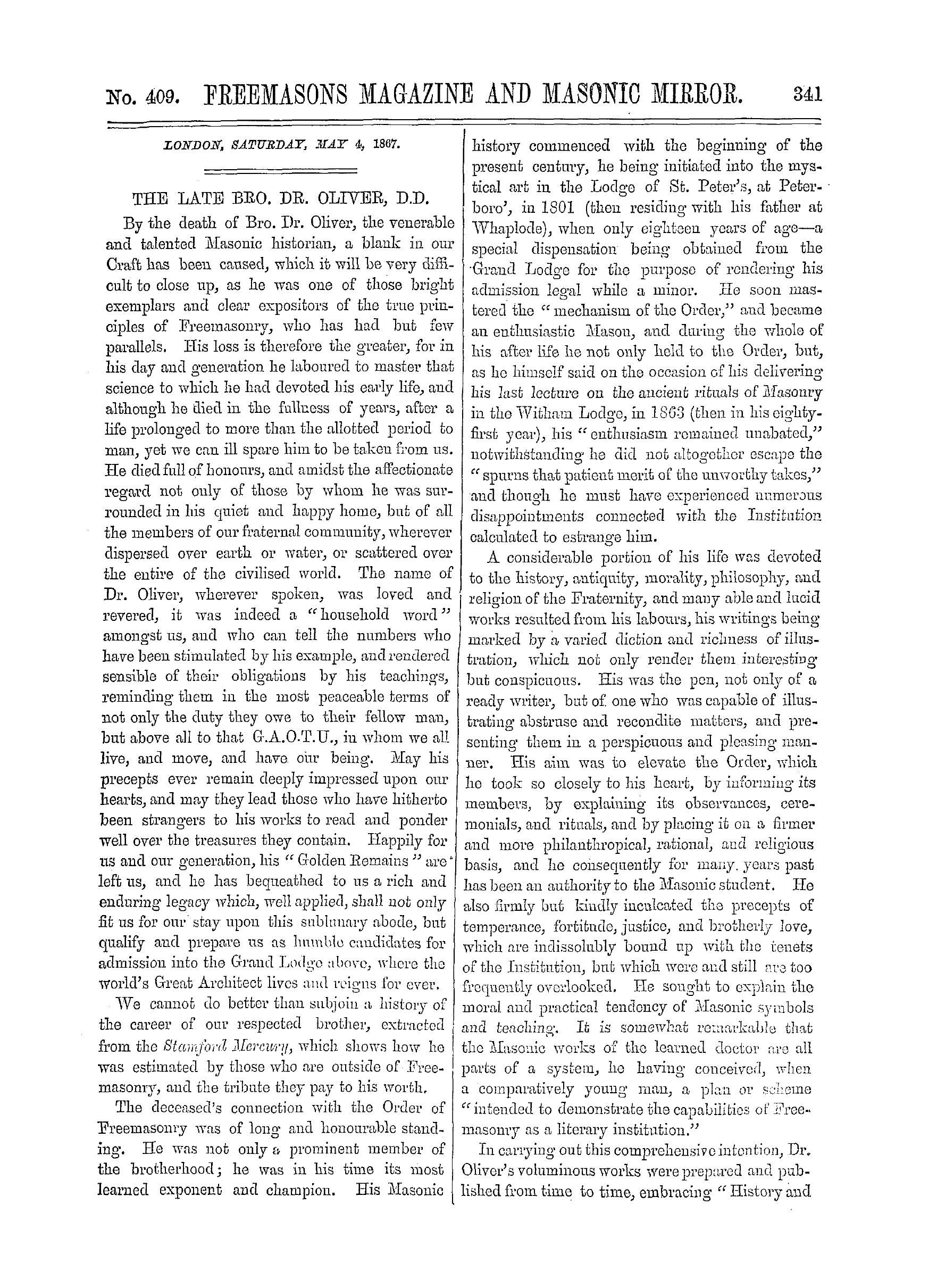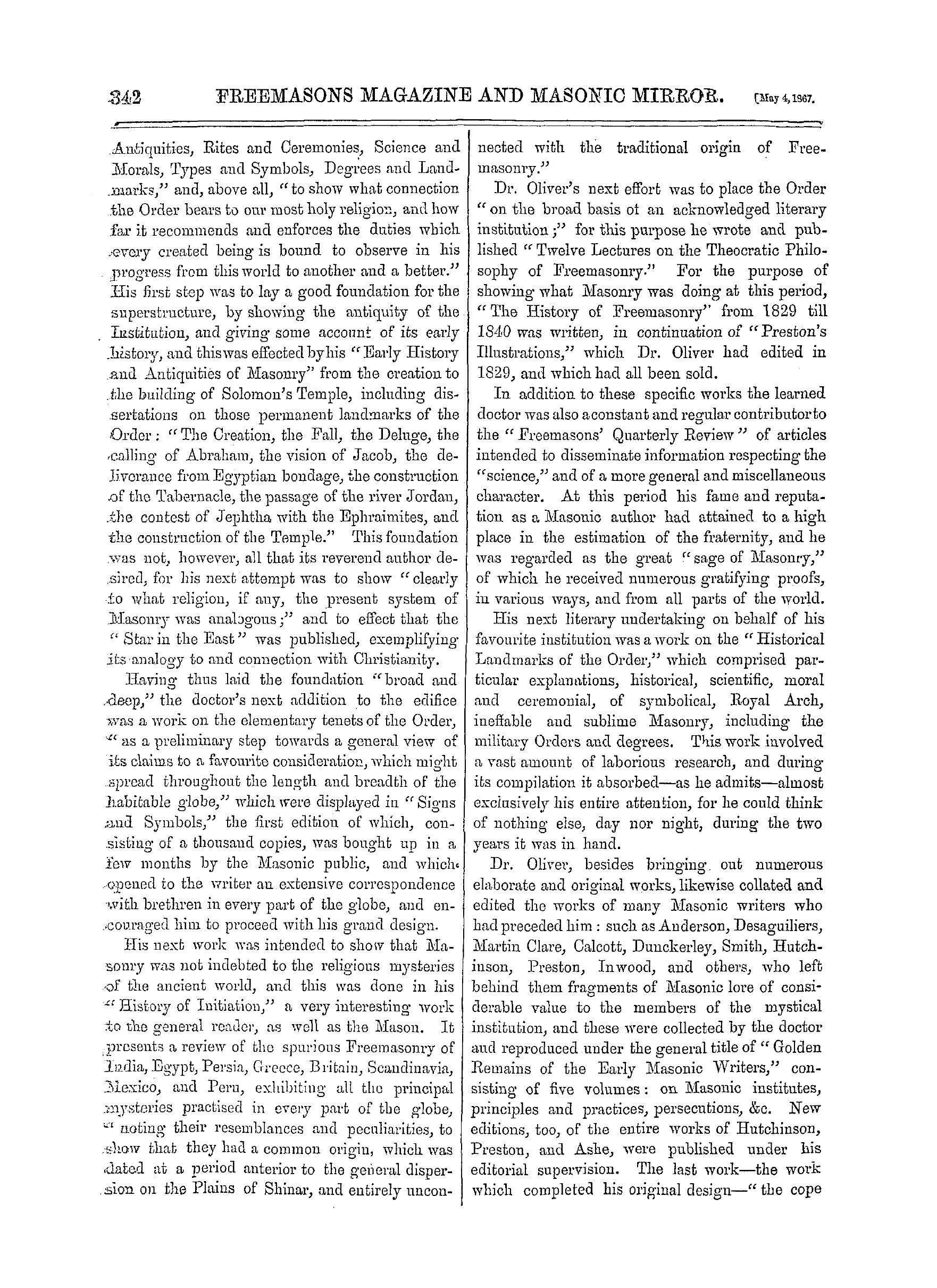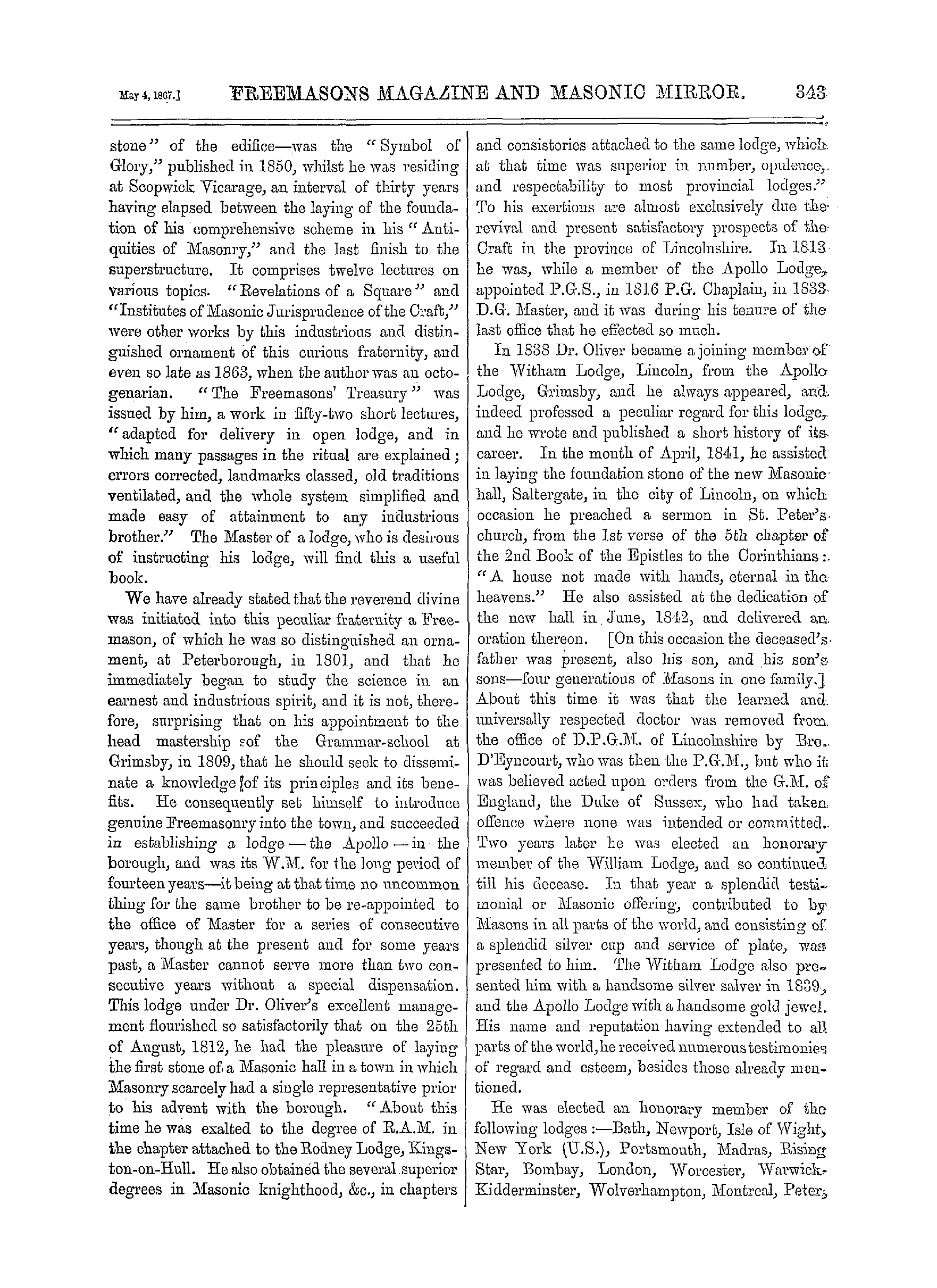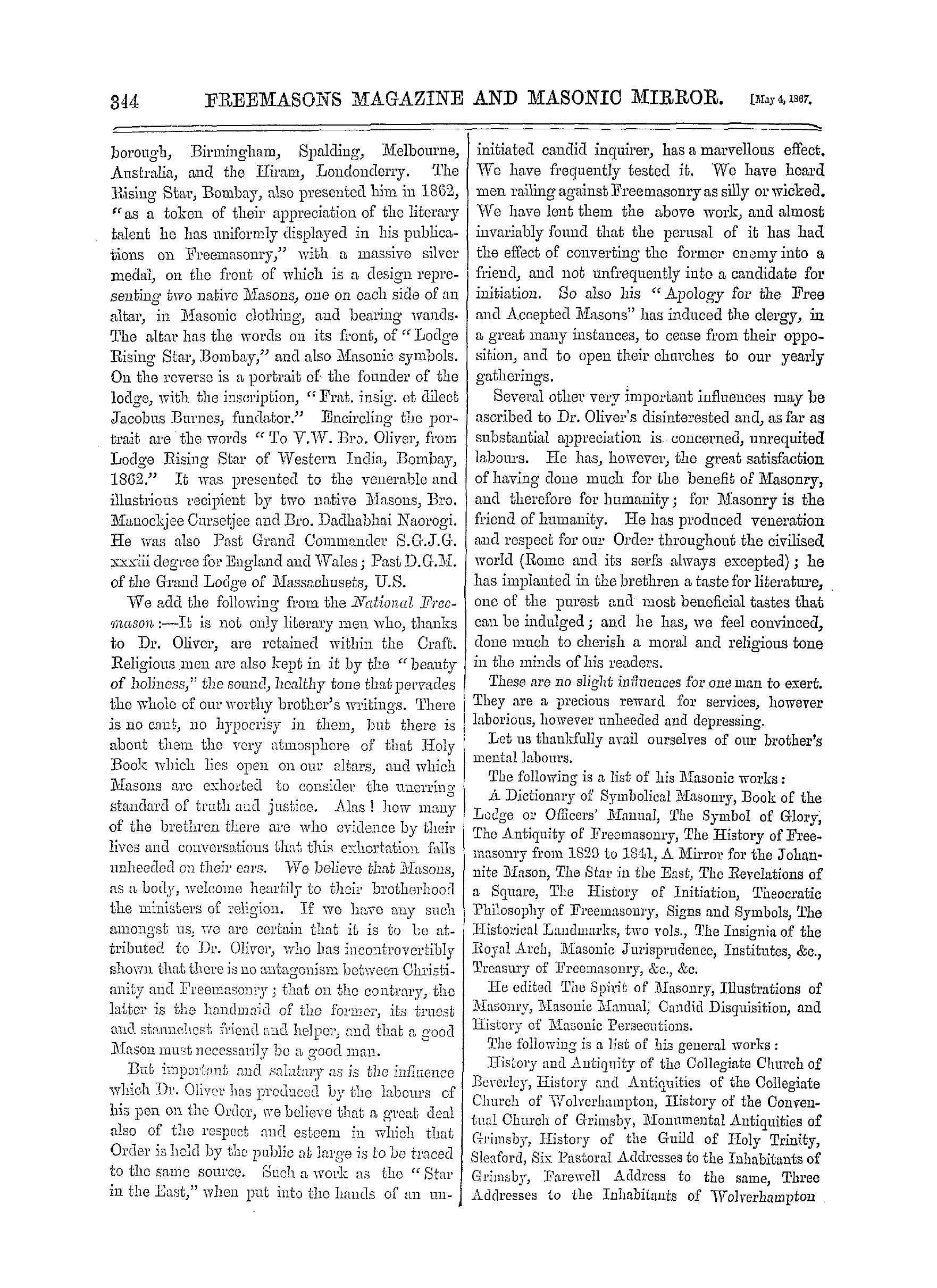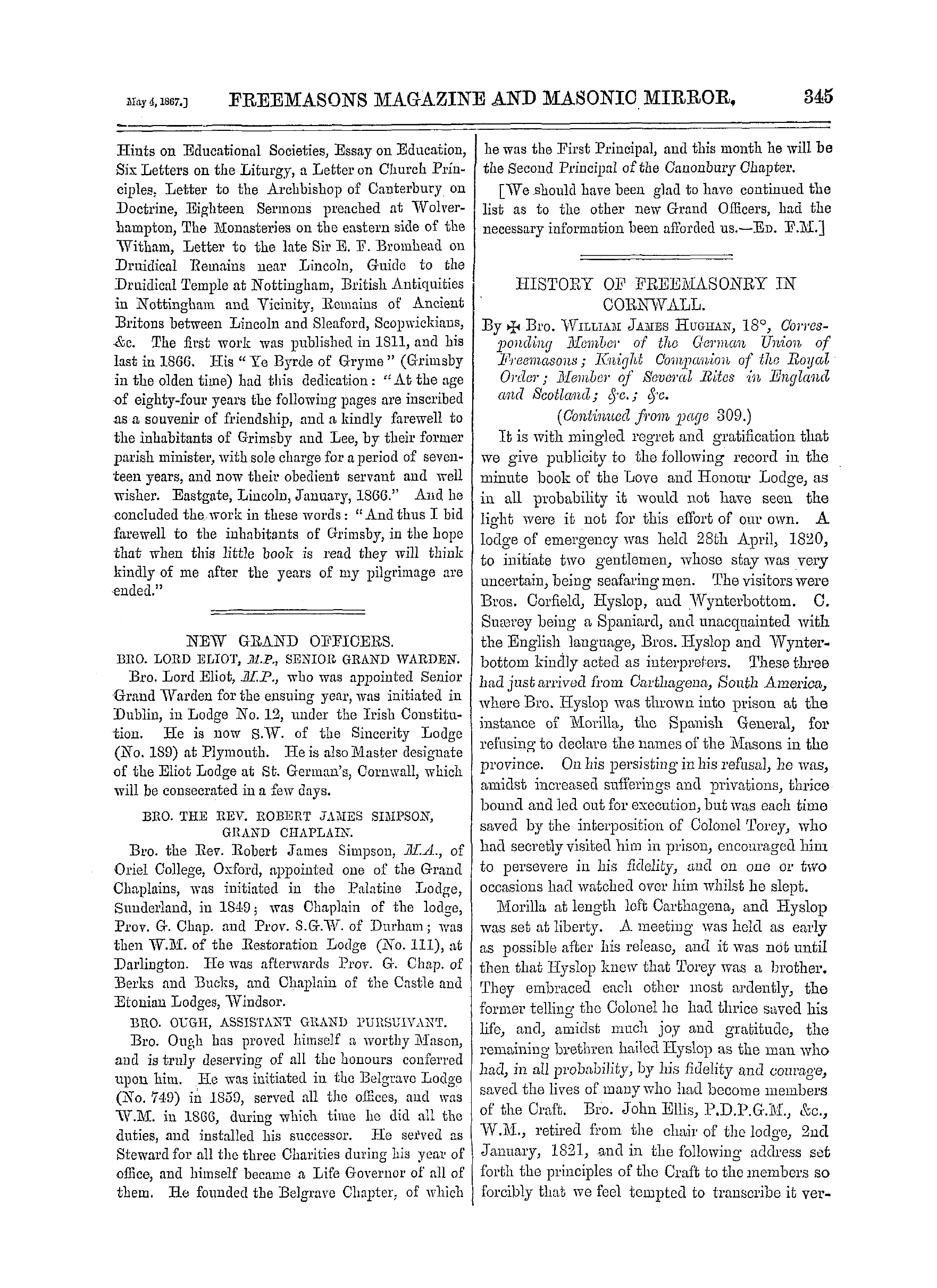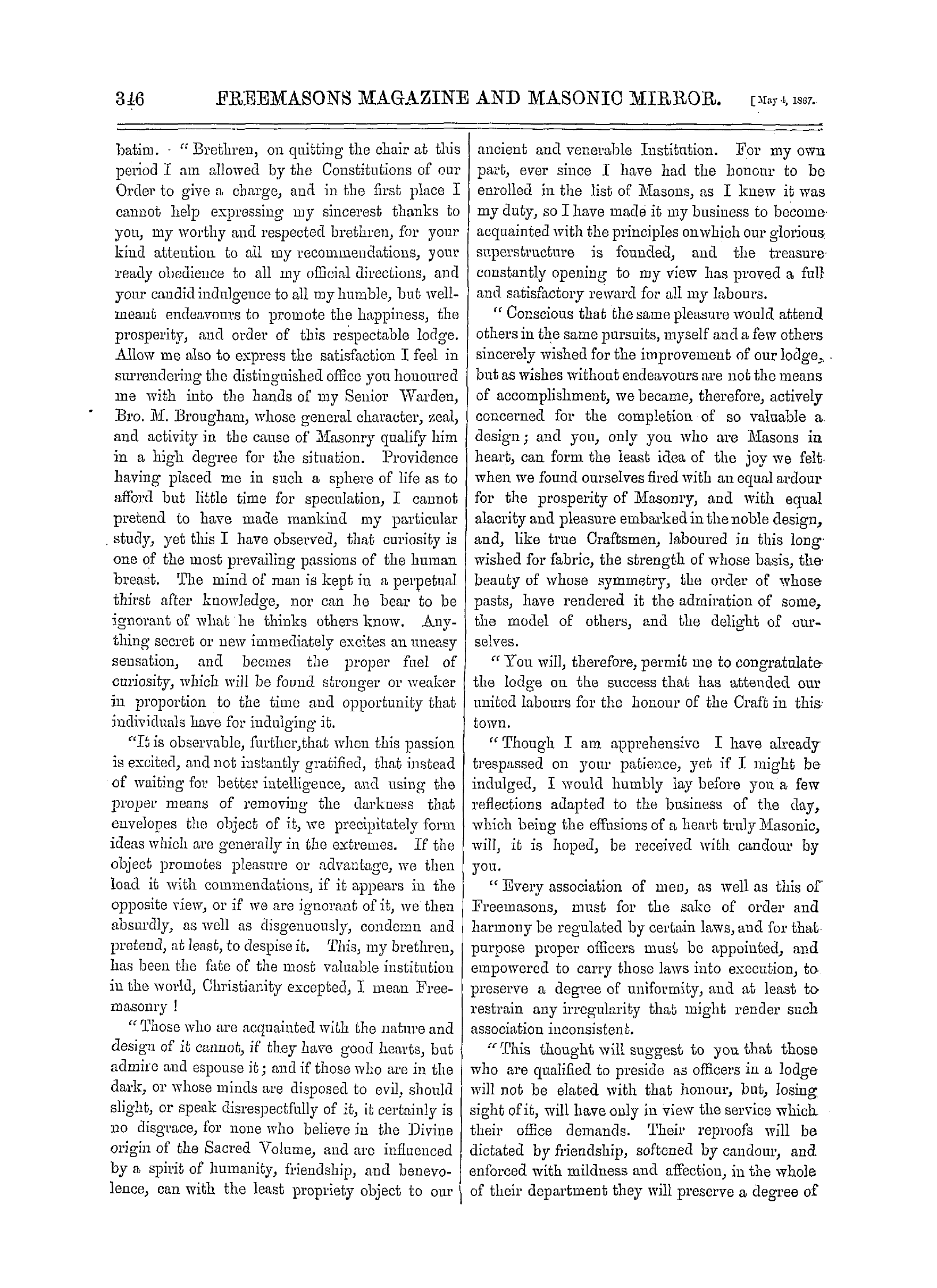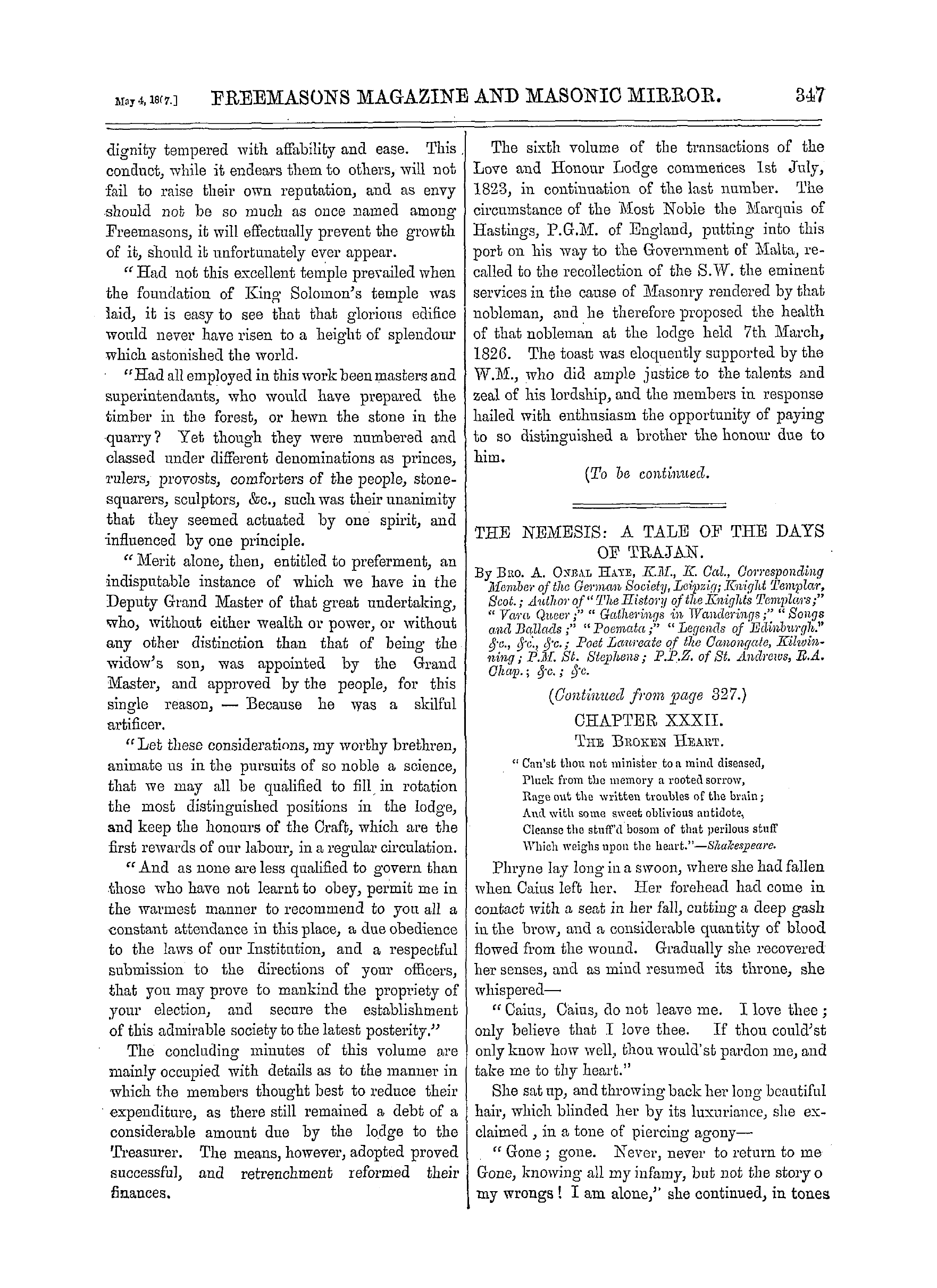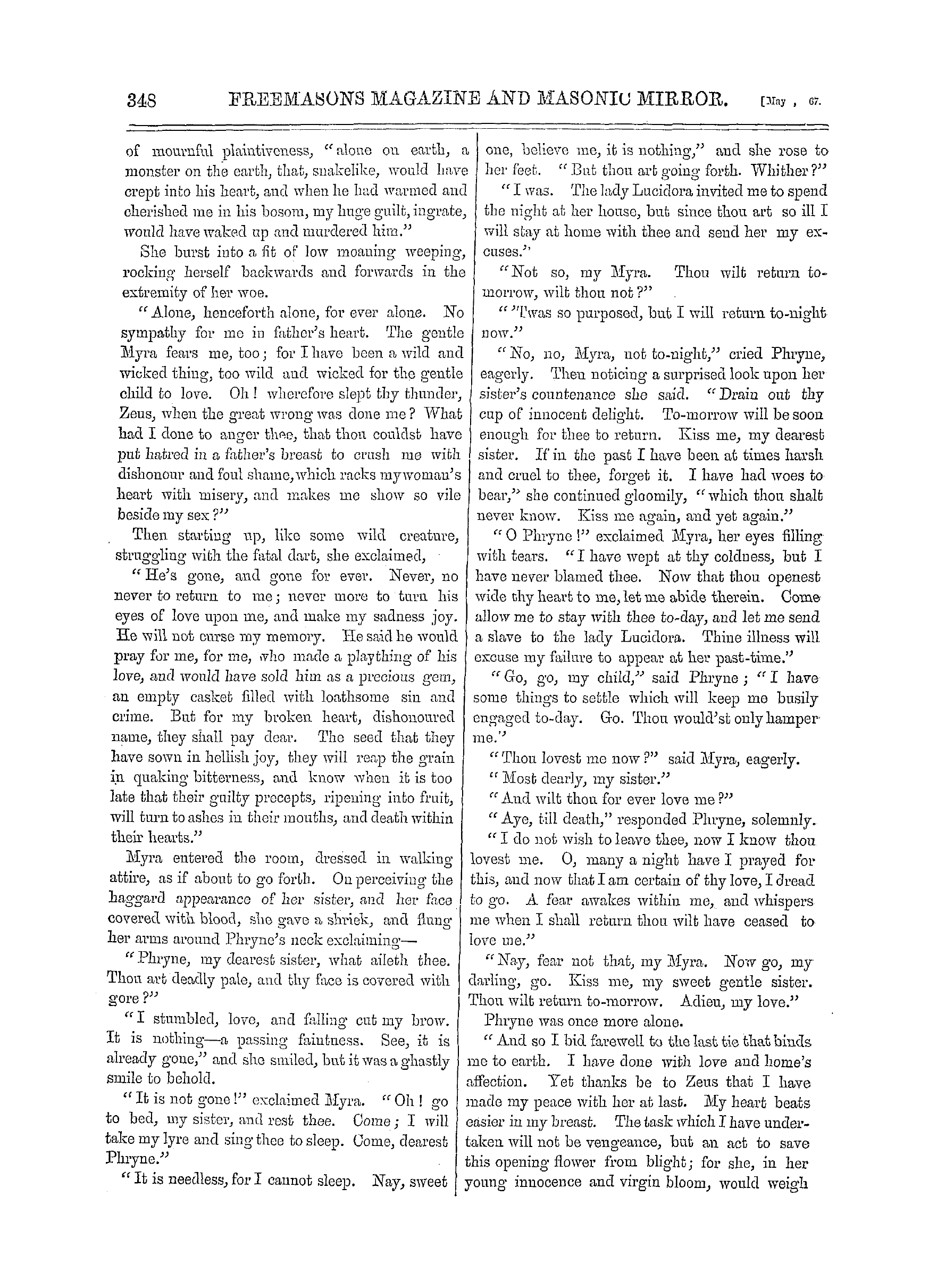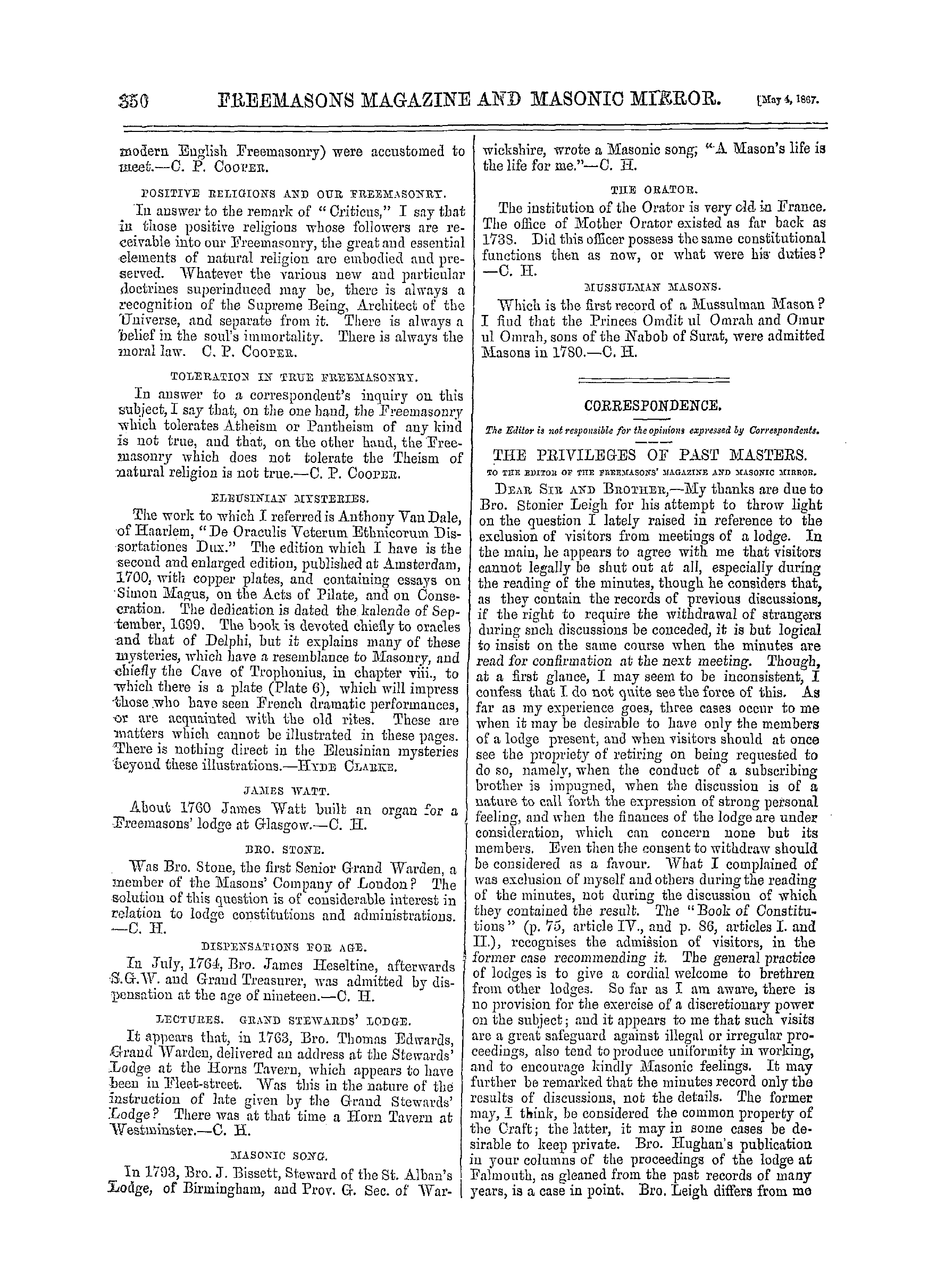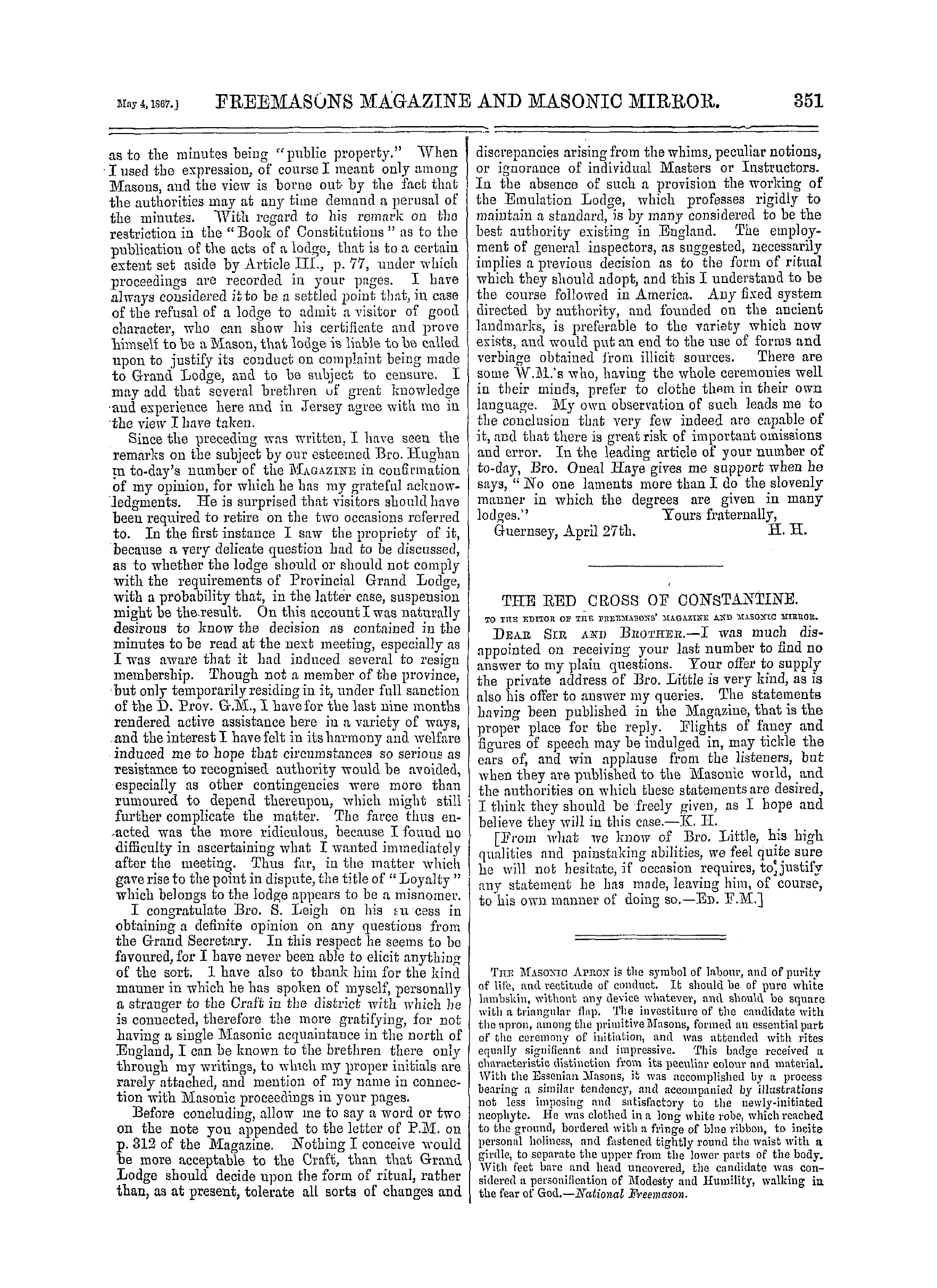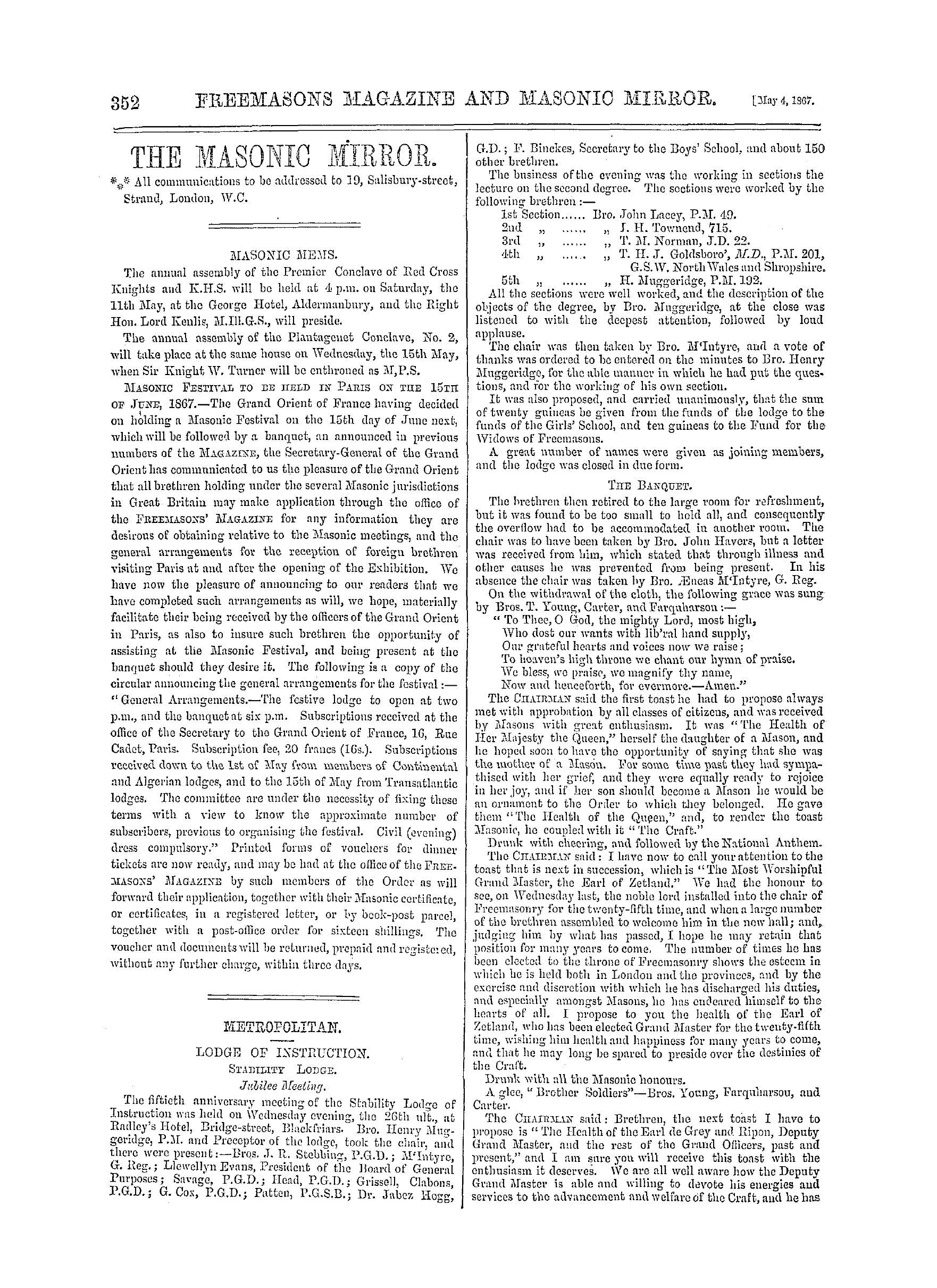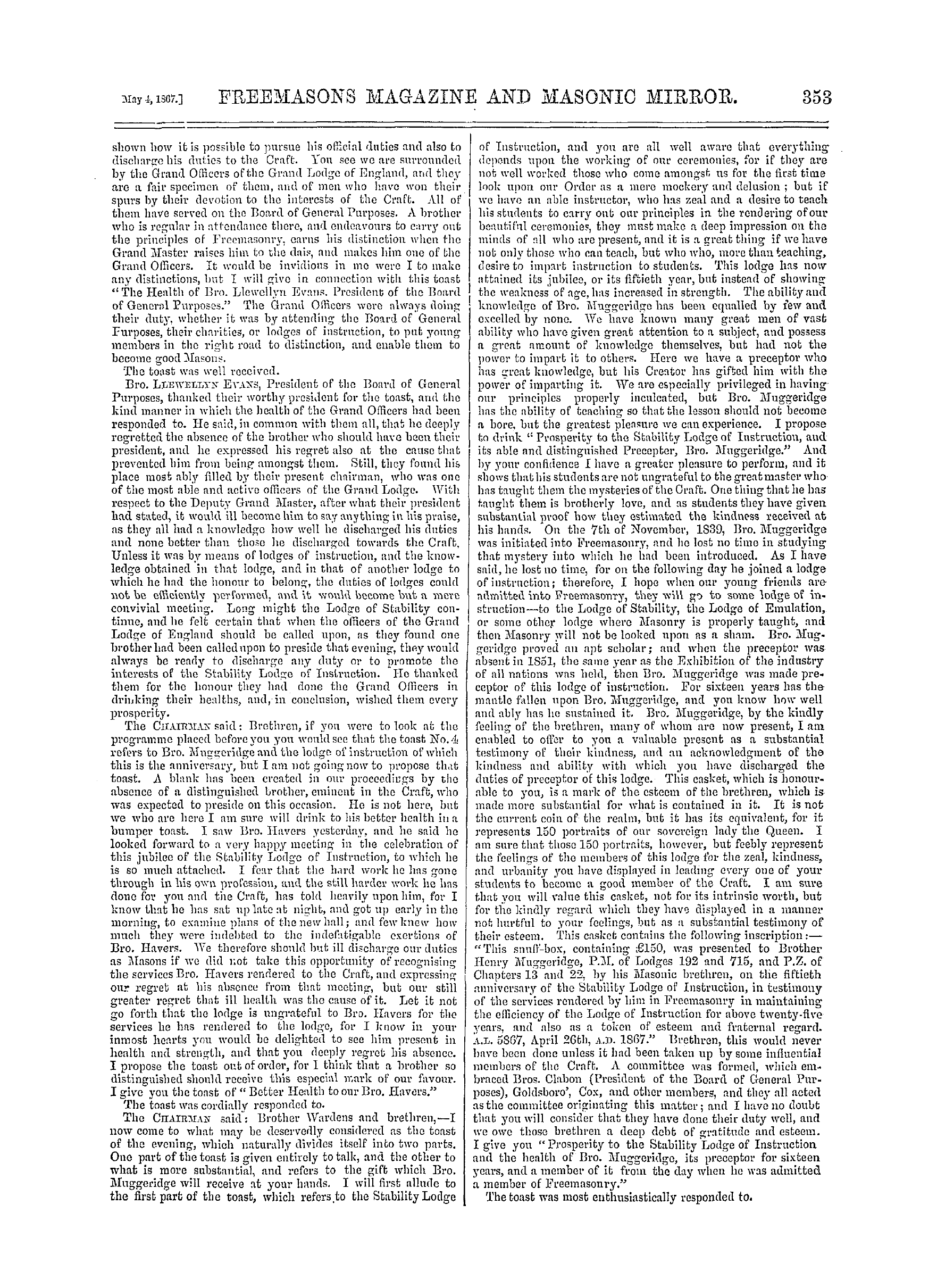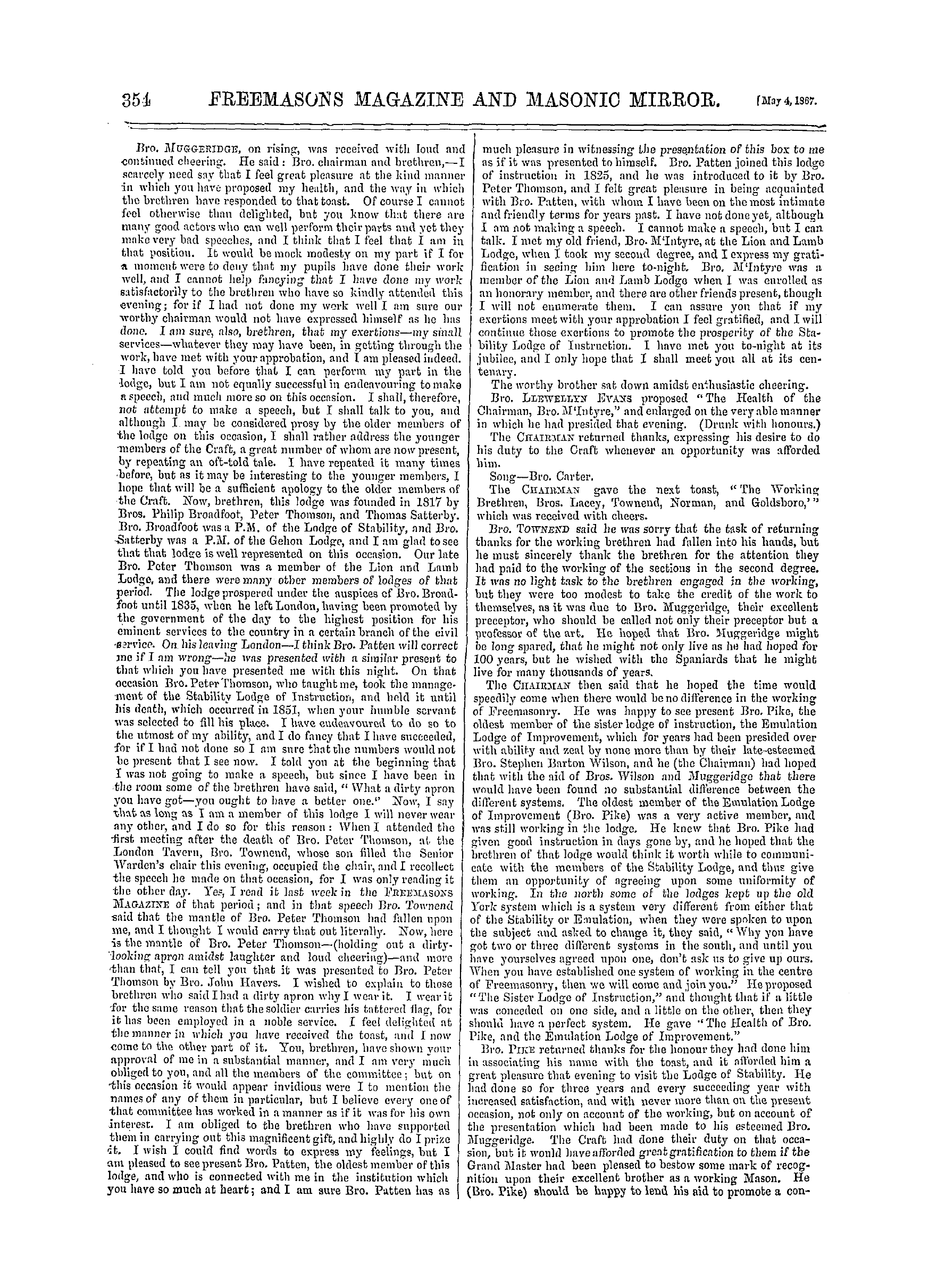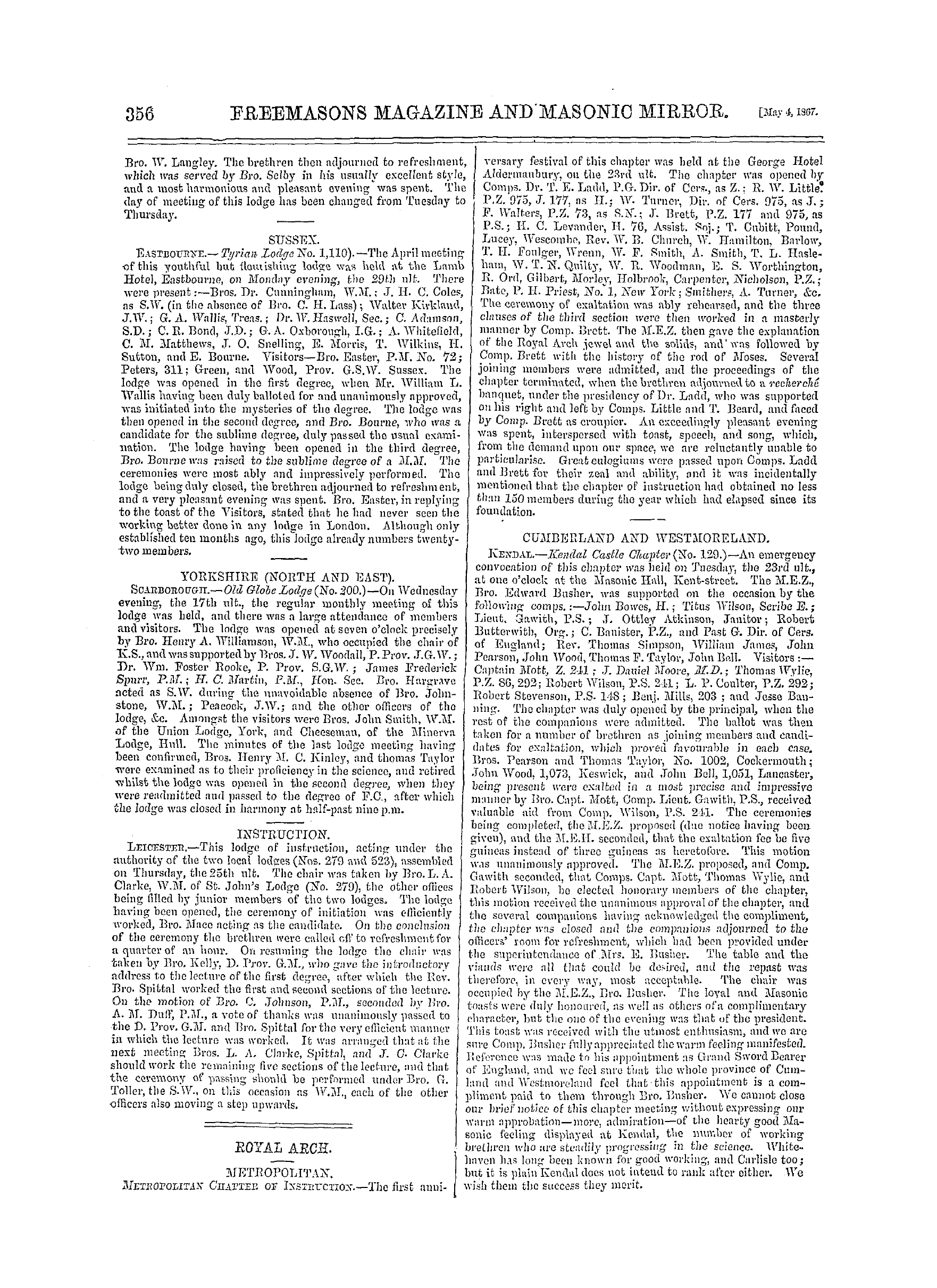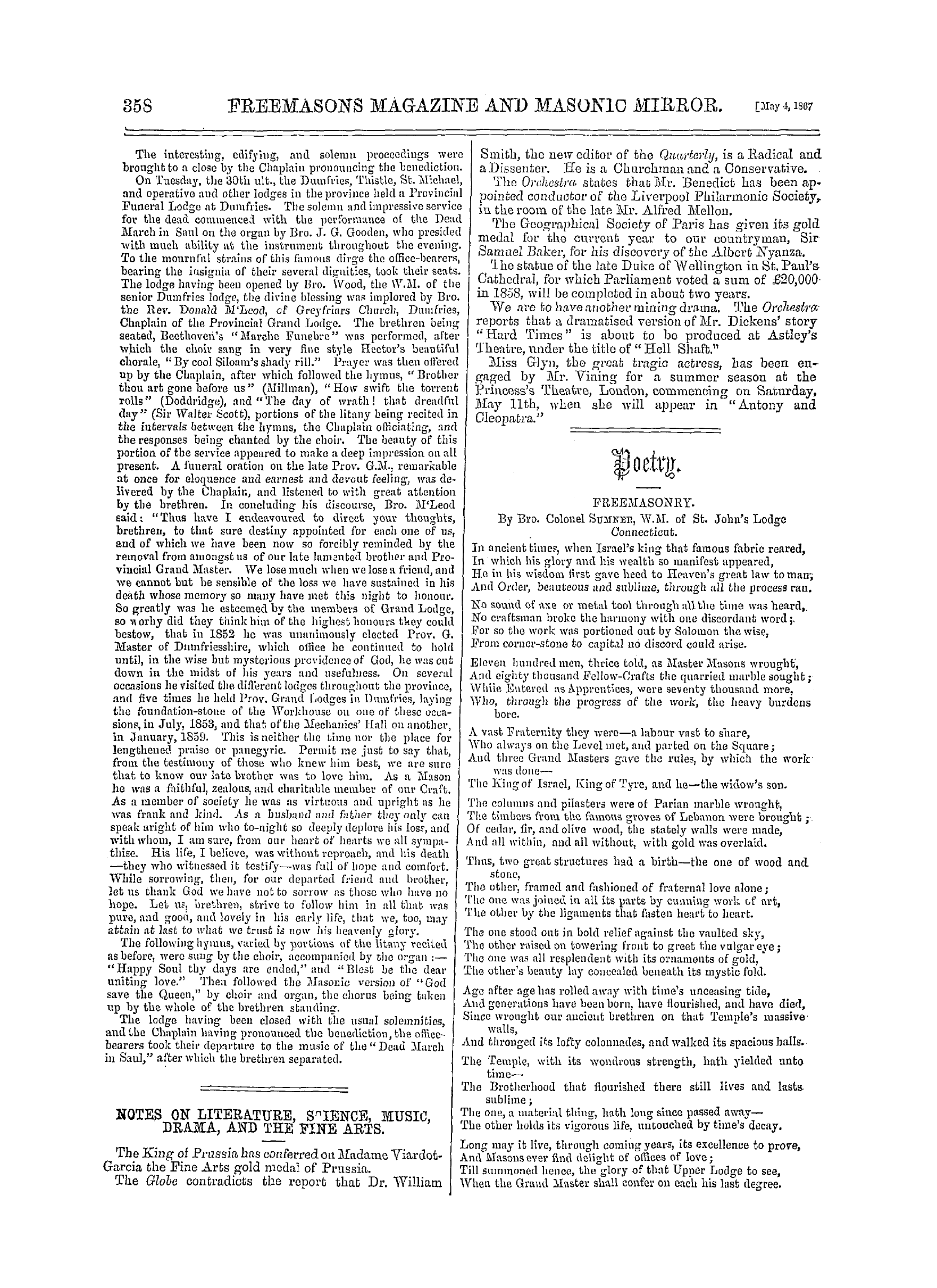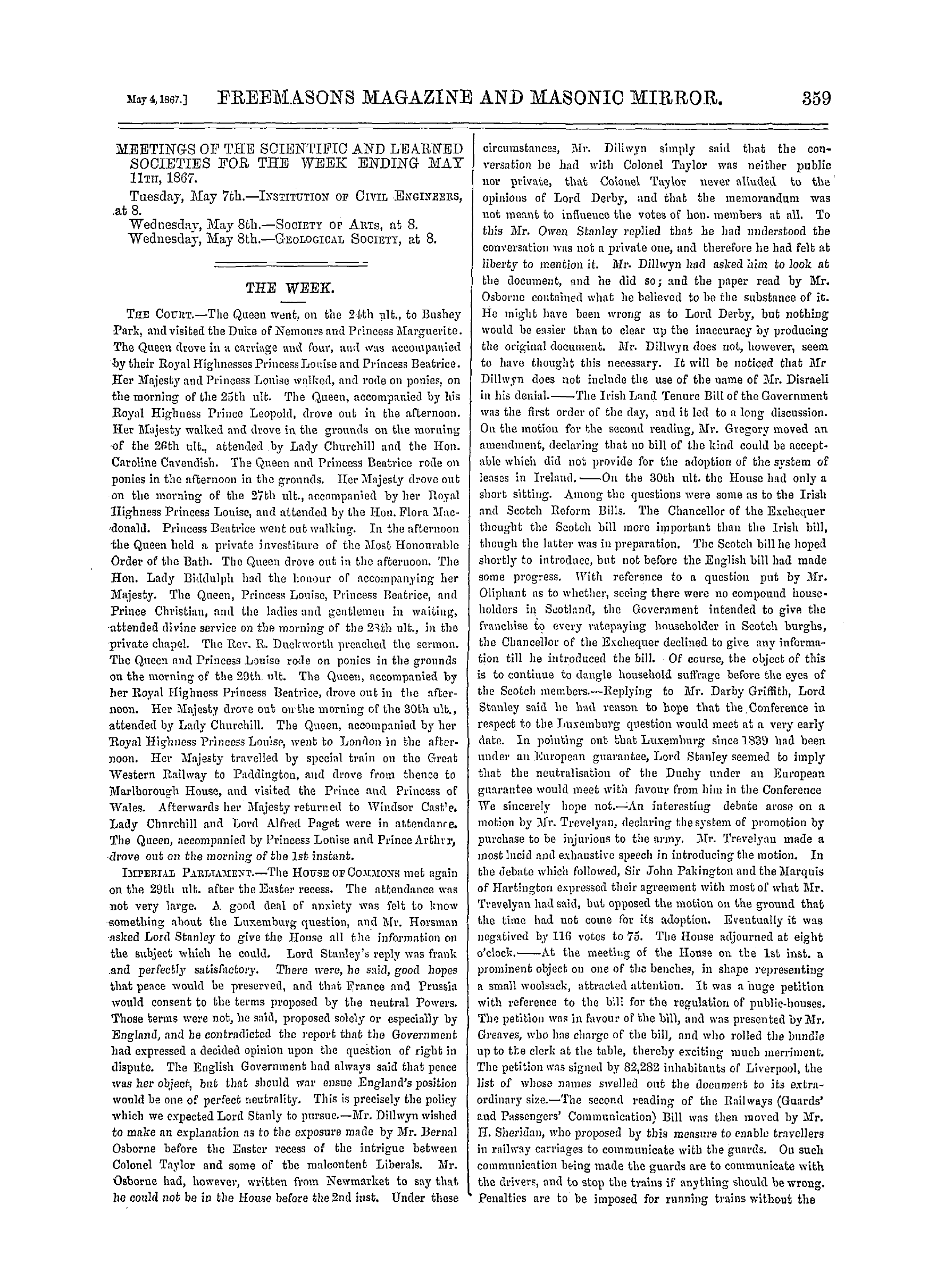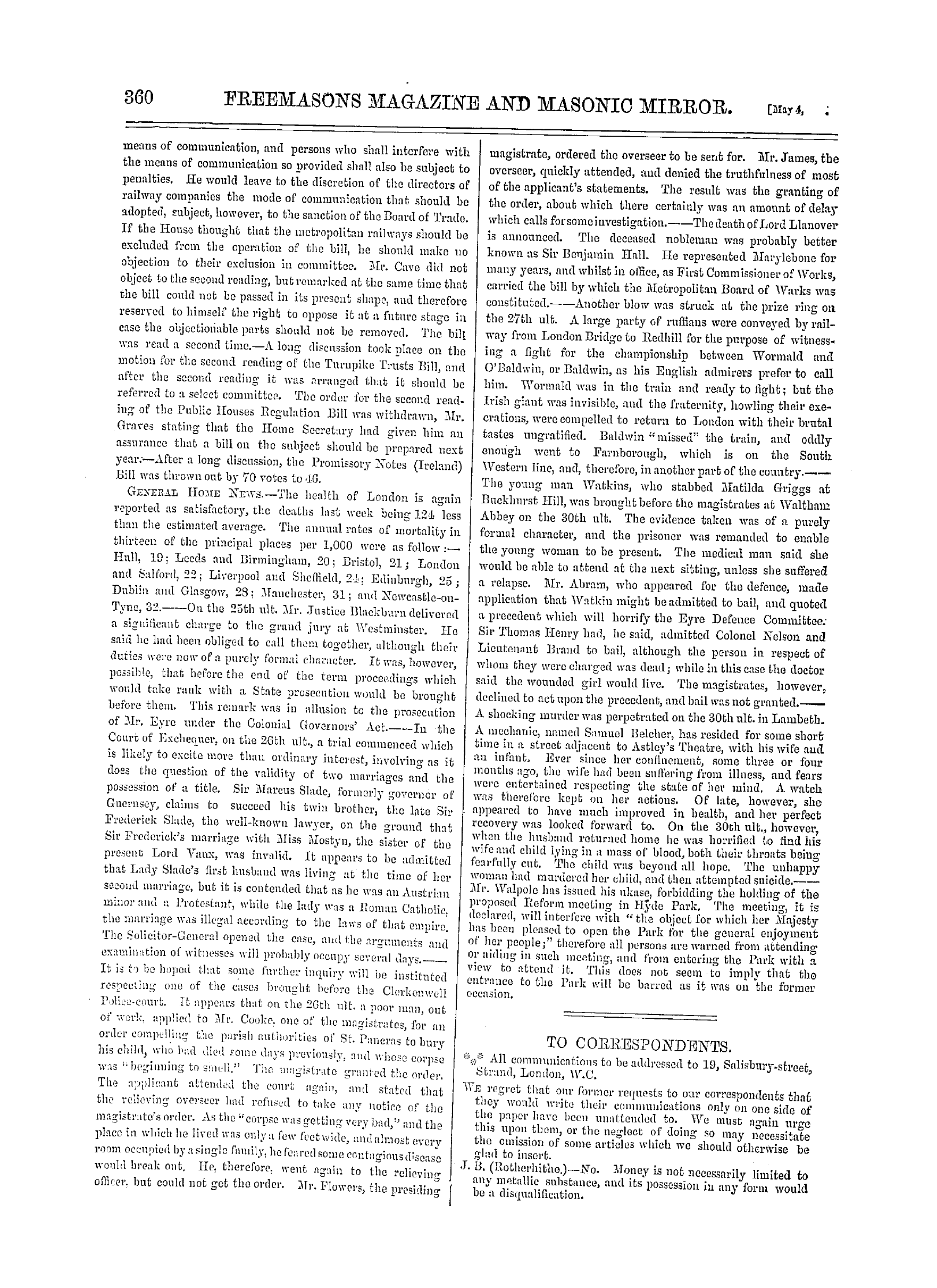-
Articles/Ads
Article THE LATE BRO. DR. OLIVER, D.D. ← Page 2 of 5 →
Note: This text has been automatically extracted via Optical Character Recognition (OCR) software.
The Late Bro. Dr. Oliver, D.D.
Antiquities , Rites and Ceremonies , Science and Morals , Types and Symbols , Degrees and Landmarks , " and , above all , "to show what connection . the Order bears to our most holy religion , and how far it recommends and enforces the duties which
. . every created being is bound to observe m his . . progress from this world to another and a better . " His first step was to lay a good foundation for the superstructure , by showing the antiquity of the Institution , and giving some account of its early
. history , and this was effected by his "Early History .. and Antiquities of Masonry" from the creation to . the building of Solomon's Temple , including dissertations on those permanent landmarks of the Order : " The Creation , the Fall , the Deluge , the
'Calling" of Abraham , the vision of Jacob , the deliverance from Egyptian bondage , the construction . of the Tabernacle , the passage of the river Jordan , . the contest of Jephtha with the Ephraimites , and the construction of the Temple . " This foundation
. was not , however , all that its reverend author desired , for his next attempt was to show " clearly . to what religion , if any , the present system of . Masonry was analogous ; " and to effect that the ' Star in the East" was published , exemplifyingits analogy to and connection with Christianity . Having- thus laid the foundation "broad and
. deep , the doctor s next addition to the edifice ¦ svas a work on the elementary tenets of the Order , ' ¦ " as a preliminary step towards a general view of its claims to a favourite consideration , which mi ght . spread throughout the length and breadth of the
. habitable globe , " which were displayed in " Signs . and Symbols , " the first edition of which , consisting of a thousand copies , was bought up in a few months by the Masonic public , and which < opened to the writer an extensive correspondence
with brethren in every part of the globe , and encouraged him to pi-oceed with his grand design . His next work was intended to show that Masonry was not indebted to the religious mysteries -of the ancient world , and this was done in his
¦ " History of Initiation , " a very interesting work ¦ . to the general reader , as well as the Mason . It presents a review of the spurious Freemasonry of India , Egypt , Persia , Greece , Britain , Scandinavia , . Mexico , and Peru , exhibiting all the principal
. mysteries practised in every part of the globe , " ¦ '' noting their resemblances and peculiarities , to -show that they had a common origin , which was ¦ dated at a period anterior to the general dispersion on the Plains of Shinar , and entirely
unconnected with the traditional origin of Freemasonrv . " Dr . Oliver ' s next effort was to place the Order " on the broad basis ot an acknowledged literary institution ; " for this purpose he wrote and
published " Twelve Lectures on the Theocratic Philosophy of Freemasonry- " For the purpose of showing what Masonry was doing at this period , "The History of Freemasonry" from 1829 till 1840 was written , in continuation of "Preston ' s
Illustrations , " which Dr . Oliver had edited in 1829 , and which had all been sold . In addition to these specific works the learned doctor was also aconstant and regular contributorto the " Freemasons' Quarterly Review " of articles
intended to disseminate information respecting the "science , " and of a more general and miscellaneous character . At this period his fame and reputation as a Masonic author had attained to a high place in the estimation of the fraternity , and he
was regarded as the great " sage of Masonry , " of which he received numerous gratifying proofs , in various ways , and from all parts of the world .
His next literary undertaking on behalf of his favourite institution was a work on the "Historical Landmarks of the Order , " which comprised particular explanations , historical , scientific , moral and ceremonial , of symbolical , Royal Arch ,
ineffable and sublime Masonry , including the military Orders and degrees . This work involved a vast amount of laborious research , and during its compilation it absorbed—as he admits—almost exclusively his entire attention , for he could think
of nothing else , day nor night , during the two years it was in hand . Dr . Oliver , besides bringing , out numerous elaborate and original works , likewise collated and
edited the woi'ks of many Masonic writers who had preceded him : such as Anderson , Desaguiliers , Martin Clare , Calcott , Dunckerley , Smith , Hutchinson , Preston , Inwood , and others , who left behind them fragments of Masonic lore of
considerable value to the members of the mystical institution , and these were collected by the doctor aud reproduced under the general title of " Golden Remains of the Early Masonic Writers , " consisting of five volumes : on Masonic institutes ,
principles and practices , persecutions , & c . New editions , too , of the entire works of Hutchinson , Preston , and Ashe , were published under his editorial supervision . The last work—the work which completed his original design— " the cope
Note: This text has been automatically extracted via Optical Character Recognition (OCR) software.
The Late Bro. Dr. Oliver, D.D.
Antiquities , Rites and Ceremonies , Science and Morals , Types and Symbols , Degrees and Landmarks , " and , above all , "to show what connection . the Order bears to our most holy religion , and how far it recommends and enforces the duties which
. . every created being is bound to observe m his . . progress from this world to another and a better . " His first step was to lay a good foundation for the superstructure , by showing the antiquity of the Institution , and giving some account of its early
. history , and this was effected by his "Early History .. and Antiquities of Masonry" from the creation to . the building of Solomon's Temple , including dissertations on those permanent landmarks of the Order : " The Creation , the Fall , the Deluge , the
'Calling" of Abraham , the vision of Jacob , the deliverance from Egyptian bondage , the construction . of the Tabernacle , the passage of the river Jordan , . the contest of Jephtha with the Ephraimites , and the construction of the Temple . " This foundation
. was not , however , all that its reverend author desired , for his next attempt was to show " clearly . to what religion , if any , the present system of . Masonry was analogous ; " and to effect that the ' Star in the East" was published , exemplifyingits analogy to and connection with Christianity . Having- thus laid the foundation "broad and
. deep , the doctor s next addition to the edifice ¦ svas a work on the elementary tenets of the Order , ' ¦ " as a preliminary step towards a general view of its claims to a favourite consideration , which mi ght . spread throughout the length and breadth of the
. habitable globe , " which were displayed in " Signs . and Symbols , " the first edition of which , consisting of a thousand copies , was bought up in a few months by the Masonic public , and which < opened to the writer an extensive correspondence
with brethren in every part of the globe , and encouraged him to pi-oceed with his grand design . His next work was intended to show that Masonry was not indebted to the religious mysteries -of the ancient world , and this was done in his
¦ " History of Initiation , " a very interesting work ¦ . to the general reader , as well as the Mason . It presents a review of the spurious Freemasonry of India , Egypt , Persia , Greece , Britain , Scandinavia , . Mexico , and Peru , exhibiting all the principal
. mysteries practised in every part of the globe , " ¦ '' noting their resemblances and peculiarities , to -show that they had a common origin , which was ¦ dated at a period anterior to the general dispersion on the Plains of Shinar , and entirely
unconnected with the traditional origin of Freemasonrv . " Dr . Oliver ' s next effort was to place the Order " on the broad basis ot an acknowledged literary institution ; " for this purpose he wrote and
published " Twelve Lectures on the Theocratic Philosophy of Freemasonry- " For the purpose of showing what Masonry was doing at this period , "The History of Freemasonry" from 1829 till 1840 was written , in continuation of "Preston ' s
Illustrations , " which Dr . Oliver had edited in 1829 , and which had all been sold . In addition to these specific works the learned doctor was also aconstant and regular contributorto the " Freemasons' Quarterly Review " of articles
intended to disseminate information respecting the "science , " and of a more general and miscellaneous character . At this period his fame and reputation as a Masonic author had attained to a high place in the estimation of the fraternity , and he
was regarded as the great " sage of Masonry , " of which he received numerous gratifying proofs , in various ways , and from all parts of the world .
His next literary undertaking on behalf of his favourite institution was a work on the "Historical Landmarks of the Order , " which comprised particular explanations , historical , scientific , moral and ceremonial , of symbolical , Royal Arch ,
ineffable and sublime Masonry , including the military Orders and degrees . This work involved a vast amount of laborious research , and during its compilation it absorbed—as he admits—almost exclusively his entire attention , for he could think
of nothing else , day nor night , during the two years it was in hand . Dr . Oliver , besides bringing , out numerous elaborate and original works , likewise collated and
edited the woi'ks of many Masonic writers who had preceded him : such as Anderson , Desaguiliers , Martin Clare , Calcott , Dunckerley , Smith , Hutchinson , Preston , Inwood , and others , who left behind them fragments of Masonic lore of
considerable value to the members of the mystical institution , and these were collected by the doctor aud reproduced under the general title of " Golden Remains of the Early Masonic Writers , " consisting of five volumes : on Masonic institutes ,
principles and practices , persecutions , & c . New editions , too , of the entire works of Hutchinson , Preston , and Ashe , were published under his editorial supervision . The last work—the work which completed his original design— " the cope
